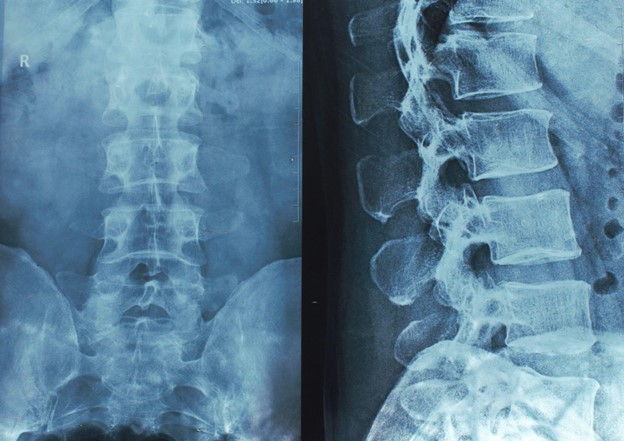SPINAL CORD INJURIES
If you or a loved one suffers from a spinal cord injury that was caused due to the negligence of someone else, our personal injury attorneys are here to help.
Bachus & Schanker Wins – Over $1 Billion Recovered
- SPINAL CORD INJURIES
- What Is A Spinal Cord Injury?
- What Are Different Kinds Of Spinal Cord Injuries?
- What Are Common Causes Of Spinal Cord Injuries?
- What Are Common Symptoms Of Spinal Cord Injuries?
- How Are Spinal Cord Injuries Diagnosed?
- What Should I Do If I Suspect A Spinal Cord Injury?
- How Do You Treat Spinal Cord Injuries?
- When Can A Spinal Cord Injury Cause Paralysis?
- What Compensation Can I Recover In A Spinal Cord Injury Lawsuit?
- Do I Have A Spinal Cord Injury Claim?
- Visit Our Office Locations Across Colorado & Beyond
SPINAL CORD INJURIES

What Is A Spinal Cord Injury?
A spinal cord injury occurs when a person has suffered damage to any part of the spinal cord or any of the nerves at the end of the spinal canal. Any injury to the spinal cord is likely to cause permanent damage to body functions below the site of injury, including changes to strength and sensation. A spinal cord injury can occur as a result of a car accident, slip and fall incident, acts of violence, or medical malpractice. Spinal cord injuries can be incredibly difficult to overcome mentally, as these injuries often change a person’s ability to carry out basic movement and abilities.
What Are Different Kinds Of Spinal Cord Injuries?
Like many injuries, there are different types and levels of spinal cord injuries. Damage to the spinal cord is broken down into four degrees: cervical, thoracic, lumbar, and sacral.
- Cervical: This level of spinal cord injury occurs within the first seven vertebrae within the neck and is considered the most severe type of injury to the spine. A cervical spinal cord injury results in quadriplegia, leaving all four limbs paralyzed. The amount of sensation a person retains in their limbs depends on the specific section within the first seven vertebrae that has been injured.
- Thoracic: A thoracic spinal cord injury occurs within the upper and middle part of the back, which is made up of 12 vertebrae. An injury within the thoracic area of the spinal cord has an impact on many of the victim’s muscles. Unlike a cervical spinal cord injury, a thoracic spinal cord injury does not leave victims with quadriplegia, and victims maintain control of their arms.
- Lumbar: The lumbar section of the spine includes five large vertebrae beginning below the thoracic region. An injury to the lumbar section of the spine is less severe than an injury to the cervical or thoracic spinal cord areas but can still be life-altering. Victims of lumbar spinal cord injuries maintain full upper-body mobility but experience a loss of function from their hips through their legs. Victims of this level of spinal cord injuries lose control of certain bodily functions, including control of their bowel and bladder.
- Sacral: This section of the spinal cord is located at the bottom of the spine, controlling the buttocks and thighs. Although still traumatic, victims of a sacral spinal cord injury maintain a significant amount of bodily control as the entire spine above the injury still has mobility.
What Are Common Causes Of Spinal Cord Injuries?
Johns Hopkins Medicine reports that the common causes of spinal cord injuries include:
- Motor vehicle accidents
- Slip and fall accident
- Falling from an elevated surface, like falling from a ladder or roof
- Falls that occur from broken or poorly designed safety railings
- Assault and battery, including wounds from gunshots, knives, and other weapons
- Swimming accidents, like diving into shallow water
- Sports injuries, including blows to the head and chest
- Medical malpractice
- Electrical accidents
- Illness and disease
- Birth injuries
- Trampoline accidents
- Pedestrian accidents
What Are Common Symptoms Of Spinal Cord Injuries?
Symptoms of spinal cord injuries depend on the location of the injury along the spine and the severity of the injury. As mentioned above, a person’s ability to control their limbs is the most recognizable symptom of a spinal cord injury. A complete loss of control over all four limbs indicates an upper spinal cord injury, whereas a loss of control over the lower limbs indicates an injury to the lower spine.
In addition to the loss of limbs, more specific symptoms include:
- Loss of feeling below the point of injury
- Inability to move limbs, including arms and legs
- Cracked vertebrae
- A decrease in sensitivity to touch
- Lack of ability to detect hot and cold
- Incontinence, loss of bowel/bladder functioning
- Sexual dysfunction
- Muscle weakness and spasms
- Breathing difficulty
- Unusual or unhealthy heart rate or blood pressure
- Digestive issues
- Headache
- Inability to hold the head up in a normal way
- Quadriplegia, paraplegia, or triplegia
These are only some of the signs and symptoms associated with spinal cord injuries. It’s important to consult a physician to adequately assess whether your symptoms are the result of a spinal cord injury.
How Are Spinal Cord Injuries Diagnosed?
Spinal cord injuries are diagnosed by seeking medical attention immediately after sustaining the head or neck injury. Even if you do not experience symptoms right away, it’s essential to receive medical attention to avoid any more severe complications that may arise. While some spinal cord injuries may be easily recognizable to a physician upon examination, more accurate diagnostic tests include CT scans, MRIs, and X-rays.
What Should I Do If I Suspect A Spinal Cord Injury?
If you suspect that you or a loved one has suffered a spinal cord injury, you should seek medical care and contact a personal injury lawyer immediately.
How Do You Treat Spinal Cord Injuries?

Given the nature of spinal cord injuries, it is unfortunately impossible to reverse any damage caused to the spine. It is possible, however, for proper treatment to prevent further damage or to make life easier for the victims. Medications, surgeries, and immobilization techniques are among the most common treatments for these injuries. Additionally, ongoing care and rehabilitation can ease an injured person’s symptoms over time.
When Can A Spinal Cord Injury Cause Paralysis?
As discussed earlier, a spinal cord injury can cause different levels of paralysis depending on where along the spine the injury has occurred. It’s important to seek medical care immediately in an effort to minimize any potential damage done to the spine.
What Compensation Can I Recover In A Spinal Cord Injury Lawsuit?
Victims of a spinal cord injury are likely to see their entire world turned upside down in an instant. The severity of these injuries often results in an inability to work and thus lost wages. A spinal cord injury claim can lead to significant compensation for the plaintiff. A spinal cord injury lawyer will work with medical experts and insurance companies to calculate the adequate damages the plaintiff is entitled to.
These calculations for damages typically consider the extent of the plaintiff’s injury, loss of enjoyment of life, inability to work, any medical care the plaintiff has already required, and future medical treatments they will likely endure. These personal injury cases can result in settlements of a few hundred thousand to millions of dollars.
Do I Have A Spinal Cord Injury Claim?

If you or a loved one has suffered a spinal cord injury and are considering filing a spinal cord injury lawsuit, it’s important to ensure that you retain an experienced spinal cord injury lawyer. If you have suffered a spinal cord injury from any of the common causes mentioned earlier, it is likely that you are eligible to receive proper compensation.
Since spinal cord injuries often stem from another party’s negligence, these are very common injuries in a personal injury lawsuit. Obtaining a free case evaluation from an experienced catastrophic injury lawyer from Bachus & Schanker will help you determine whether you have a strong spinal cord injury case.
Sources:
Spinal Cord Injury. (2021)
Types of Spinal Cord Injuries. (2023).
Acute Spinal Cord Injury. (2023).
Visit Our Office Locations Across Colorado & Beyond
Serving Clients Nationwide

Written and Legally Reviewed By: Kyle Bachus
4.6 ★★★★★ 1,461 Google Reviews
Kyle is a member of the Colorado Bar associations and has served on the Board of Directors of the Colorado Trial Lawyers Association for more than twenty years in total. Over the years, Kyle has achieved justice for many clients. He has served on numerous committees and repeatedly won recognition from his peers at both the state and national level. He is proud of the role he has played in the passage of state and national legislation to protect consumers and is a frequent speaker and guest lecturer.
